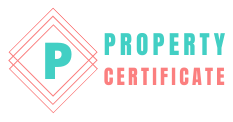So you want to invest in a buy -to-let property. It’s an attractive prospect for a stock market with low rates and high volatility. But just where do you start? It can be difficult to get things right, and renting out a buy-to-let can take a lot of time and effort. But it can be made simpler by following a few steps which can be guaranteed to help you make the most of your investment. This is the guide you need to become a buy-to-let landlord, to make the right investments and to become someone that tenants and potential tenants can trust.
Research the Market
The first question for someone considering buying to let is what you know about the market. You should know whether this is the best market to get a return on your investment, or whether your money could be better spent on something else. Buying to let will involve putting your money into a property that will probably fall in value over time. Compare this to a fixed rate savings account, investing in funds or shares, or opening a cash Isa which will provide you with tax free capital growth.
If you can, talk to people who have succeeded in this market. What was their experience, both good and bad, of the enterprise? What challenges did they face and what did they do right?
Find the right area
You need to take into account expense as well as geographical advantages. How cheap the area is, but also how accessible it is, how good the transport is in the location and what places of interest are near there. You need to find out where the nearest school is, the nearest hospital, as well as the prices and characteristics of the neighbouring houses. Ask people who live there what the neighbourhood is like, as interested buyers will almost certainly do likewise.
Work out the figures
Work out the cost of the house as well as the rent you are likely to receive. How big a deposit are you going to ask for? Many buy-to-let lenders ask for rent to cover 125% of the mortgage repayments. Buy-to-let mortgages also typically come with considerable arrangement fees.
When calculating cost of the house, factor in maintenance cost. Also consider for how long in the year the property is going to be empty for. Could the property be used for some other purpose during this time? These are all things to think about in making your calculations.
Shop around for the Best Mortgage
You should look at lots of different mortgage schemes before picking one out. Look at different banks and building societies, as they will have different buy-to-let mortgage rates with different incentives included in the package. There are comparison sites online where you can get good outlines of the differences. It might also be worth speaking to an independent broker as they will have professional advice about which mortgage is best for your individual situation. But make sure you have a working knowledge of mortgages first.
Find the Tenant You Want to Sell to
Consider who you’re going to market the property to. Will it be a young family, an elderly couple, a group of students? Who you market to will make a difference to the kind of property you buy. You might need to check that the house meets the tenant’s mobility needs, or that it is the right size for the number of people that will be living there. Some tenants will stay for longer, meaning that the property will be used more but it might also need to be maintained and repaired more.
Focus on Rental Yield and Low Costs
Unless you’re a millionaire with enough purchasing power, you should stick to investing for income rather than short term growth. Over the long term, house prices are expected to rise, but you don’t want to price yourself out of the market. You can gauge a property’s value based on rental yield; this is the annual rent as a percentage of purchase price. If a house cost £300,000 to buy and the annual rent is £30,000, the rental yield is 10%.
Do your property up
This sounds like a no-brainer, but it does pay off. A fixer upper can be bought cheaply and can be renovated for little cost, but this will improve the value of the house immensely. If you’re a DIY enthusiast, you can make improvements to some of the furnishings yourself. But be aware that renovation costs can often run over. Do the calculations first and make sure that the cost of renovation is at least expected to return some profit in the short term.
Negotiate the Right Way
As a first time buy-to-let investor you have all the advantages of a first time buyer, but you’re also trusted to to let the sale fall through, as you’re not selling a property to buy another. So haggle. Make low offers and don’t get talked into overpaying. Also, know the market, find out why the seller is selling and how long they’ve had the property for. A landlord who has owned the property for a long time and is now cashing it in will be more likely to make do with a lower offer.
Know What the Risks Are
Know the negatives as well as the positives. While house prices are climbing right now, growth is beginning to slow and could start to fall. Will your investment be able to persist this drying up of the market? Homes need repairing and things can go wrong, so make sure that you’re ready for this eventuality.
Now that you know the basics about investing in buy-to-let properties, you can be confident that you have a leg up on competitors who are also starting up in this flourishing market. So what are you waiting for? Start investing in your future, today.
